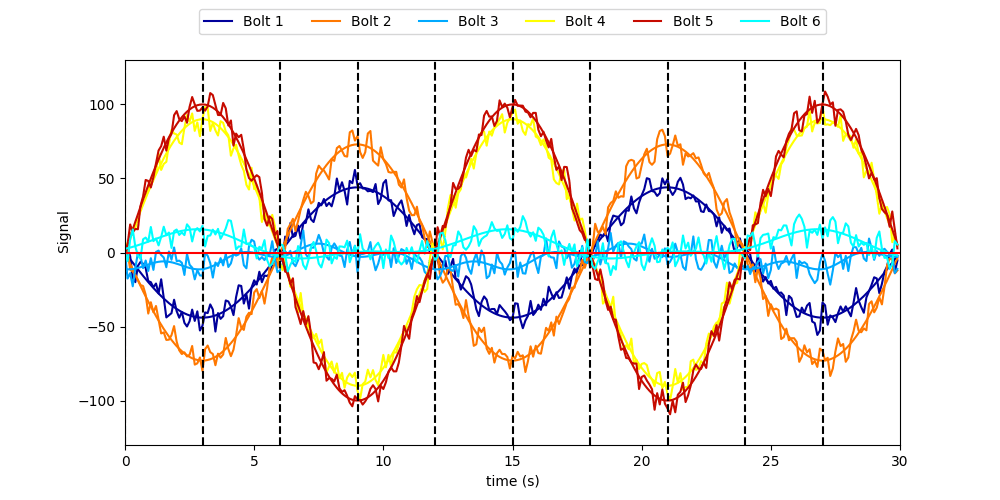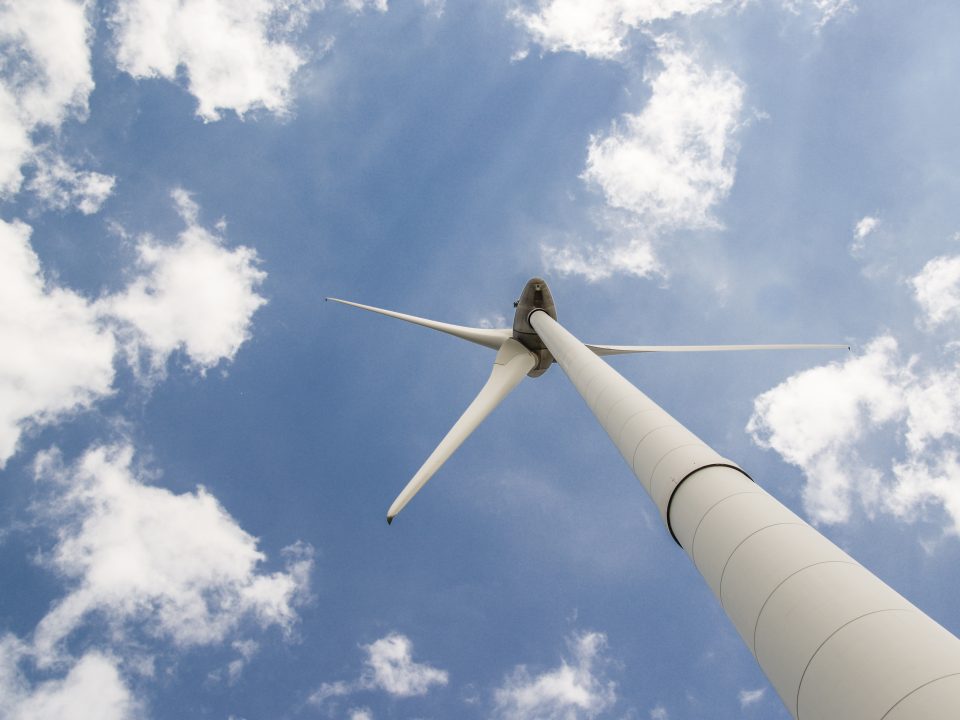
The bathtub curve and the lifetime of an asset
4. June 2021
Press release: start of the joint project inVETra – intelligent sensor technology in wind turbines
29. September 2021To accelerate the world's transition to sustainable energy, the share of wind energy has increased dramatically. Along with new installations being commissioned, there is a large fleet of wind turbines reaching the end of their planned life. At this stage, prolonging its lifetime is one of the most attractive options. Here we provide three ways our SmartScrews help you with lifetime extension of your wind turbines.
Wind turbines have become the main driver in the production of clean energy. But the European wind turbine fleet is aging. A wind turbine has a design lifetime of about 20 to 25 years. Extending a wind turbine lifetime is attractive because it can increase the return on investment and potentially reduce its carbon footprint. Lifetime extension is a complicated topic though, and its decision process depends on legal, economic, and technical factors. To continue operations beyond its design lifetime, all load-carrying components must have structural reserves left or can be easily retrofitted.
Dynamic loads are everywhere. Cyclic and turbulence derived loads from wave, wind and current are the one that cause most structural failures, particularly those due to fatigue. To withstand the critical conditions in harsh environments, especially offshore, the structural integrity of wind turbines needs to be carefully evaluated.
Nowadays most wind turbines have bolted connections to fasten its main components together: rotor blades, towers, drive trains, and foundations. Blade bolts are special because they are part of the rotating system in a wind turbine. Bolts in towers and foundations are seemingly static but, in reality, are flexible structures that bend under dynamic forces. Therefore, operators need to assess bolt connections to make decisions on lifetime extension.
The Sensorise SmartScrew System does not only monitor the condition of the bolts but also allows to understand the everchanging state of the attached structures in a wind turbine. That is possible because bolts are load-carrying, critical components located in the flux of forces produced by dynamic loads. Force and moment measurements contain valuable information about the flange and the components attached to it. Our patented technology is unique because it does not weaken the bolt, unlike common strain gauges, and can be installed like regular bolts.
The number of SmartScrews to be installed in a rotor blade flange depends on its size, maintenance data, and wind turbine manufacturer, among other things. We usually recommend installing 8 SmartScrews at symmetric points in a circular flange.
Continuous Preload Monitoring
Preload works by creating a friction between the parts to ensure that the joint stays tightly connected during operation. Proper preload of the bolted connection contributes to the reliability of the entire wind turbine. Maintaining the correct preload is, therefore, a prerequisite for a long operational life of wind turbines. However, loss of preload will naturally occur after a long-term service life, which may threaten the functionality of the bolted connection. For this reason, lifetime extension guidelines explicitly advise for inspection of bolt preload.
Bolt Preload Monitoring

Our SmartScrews provide continuous monitoring of bolt preload in real-time. It gives not only the actual value of the preload but also its time evolution. In this way, one can see how a specific bolt preload is changing in time. A decreasing signal indicates a loss of preload, either caused by sudden failures, fatigue cracks or broken nuts. An increasing signal is an indicator of broken screws or bolts in the SmartScrew’s vicinity in the flange, as the SmartScrew must carry the broken bolt’s load as well. This information can be used to mitigate catastrophic failures.
Monitoring of bolted flange connections
Bolt failure can compromise the structural integrity of the connection between the blades and the hub, the main shaft and the hub, the monopile and the transition piece, as well as the foundation and the tower. When a bolt fails, a chain reaction will likely take place, in which failure of several consecutive bolts lead to the disconnection of the blade and the hub. On one hand, preload checks of every tenth bolt may not be enough to mitigate a potential catastrophe. On the other hand, removing every bolt in a flange for visual inspection is too costly. Our bolted flange monitoring system solves this problem.
Dynamic signal

By equipping the flange with our SmartScrews you get a complete picture of the structural health of your flange connection. The dynamic force signal produced by the rotating motion captures the blade's dynamic behaviour. This not only allows for the analysis of the vibrational response in the structure, but also for the analysis of load cycle, load amplitudes, load spectra, bending moments and other features. However, the real prize of having a monitoring system in place, is in providing prognostic information. That helps to guide future maintenance activities as well as decisions on lifetime extension.
Prediction of remaining useful lifetime
Remaining Useful Lifetime (RUL) is the time remaining for a component to perform its functional capabilities before failure. Local inspections are not enough to determine RUL because they provide too sparse data points for a reliable estimation. On top of that, bolt inspections are normally intrusive, which may have serious consequences for the wind turbine availability. Modelling is also another tool used to estimate RUL but often gives conservative failure estimates, decreasing the return on investment.
Load monitoring of critical bolted connections tracks the load history. It enables a direct comparison between design loading and occurred loading to derive the RUL of the structure. Data-driven and physics-based methods are suitable for that purpose. It means that you do not have to rely solely on models to calculate the stresses on the flange connection but can rather measure them. This increases maintenance efficiency to determine when future maintenance activities are necessary. It also increases the accuracy of RUL estimation for a better lifetime extension assessment.
As the demand for wind energy continues to rise in the next decades, wind turbines are expected to exceed their planned lifetime. The SmartScrew System has been proved and deployed on wind turbines in the field. We turn your bolt into a force measuring device without any change in its mechanical properties, and that can be installed like any other bolt. Perfectly suitable for retrofitting. Reach out to us if you'd like to know more.




